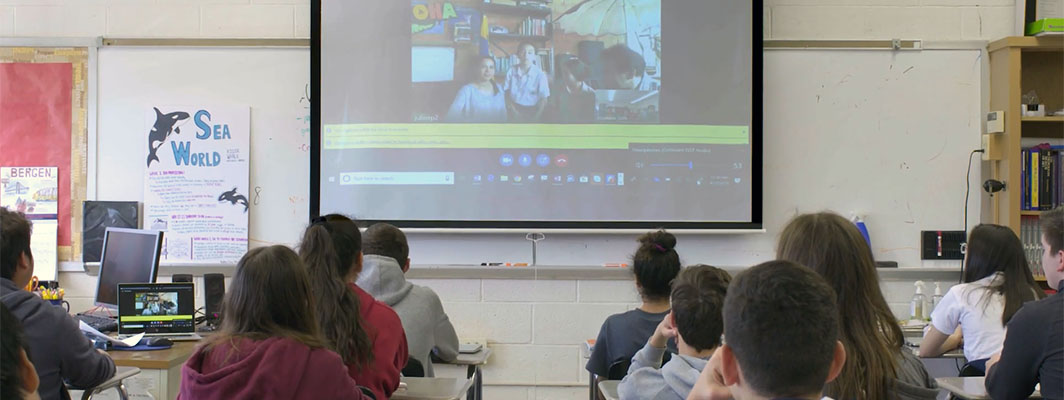
In this second post on our series on authentic learning with virtual exchange, HP Teaching Fellow Glen Coleman shares how students are using Skype to learn about history through the lens of contemporary issues.
At some point in a teacher’s career, it is inevitable that students will ask this question: “Why do I need to know this?” As uncomfortable as this may be, I think the question is crucial.
In my view, history loses its power to open students’ minds when it does not directly connect to now. This became clearer than ever, as a social studies teacher of 22 years, after my students and I Skyped with Julio, a teacher in Venezuela.
This experience with Julio helped us achieve a new level of understanding of what it means to create relevance. Julio is “living the history” today in Venezuela. Skyping caused us to realize that we can actually converse with the people in real-time who will write history’s next chapter.
During our session, Julio explained that he hacked his car to generate electricity to turn on his router so he could Skype with us in Oradell, New Jersey. He sent us pictures of the serpentine wires that stretched from his car, through his home, and eventually to his router. The mere act of showing how he turned on his computer revealed the dire economic plight of Venezuelans. Immediately, this reminded us of the many things we take for granted. It also sparked urgency and motivated us to ask Julio questions.
“Why are you hacking your car engine for electricity?” and “How often does the power go out?” Or as one student asked, “What are your emotions like throughout the day, knowing that your country is in danger?”
Prior to Skyping Julio, I thought teaching history was something requiring deep annotation. For example, students might write questions in the margins of the Gettysburg Address and then ask each other, “What does this mean: ‘shall not perish from this earth’?” But with digital technology, the chasm between the past and present can shrink; we can bring today’s “Lincolns” into the classroom.
I’m at the tip of the iceberg. More than bringing the outside world into my classroom, Skype helped me and my students forge empathetic bonds. In partnership with three other teachers and their classes, it drove us to collect over 250 pounds of food and medical supplies for Julio’s community in need. We texted him pictures of boxes filled with food and medical supplies. He and his family responded with a video of them singing “Amazing Grace.” He played piano while his wife, Juliette, and children sang. When watching that video the next day, it brought tears to nearly everyone. We knew we’d made a difference.
This experience came about because my colleagues and I agreed it was time to directly connect history to today. We brainstormed this prompt: “Based on your understanding of the French Revolution, how can Venezuela prevent their own violent revolution?” Students delivered inspired two-minute speeches to propose solutions for Venezuela by using their knowledge of the French Revolution. This process further motivated my colleague, Dawn Rivas, to Skype Julio. I felt compelled to do the same.
From this, an explosion of genuine interest ignited because students didn’t just read about history; they were living it by speaking with Julio and his family. The matter became—and remains—urgent for my students. As they told me afterwards, Julio was the ultimate primary source.”
History needs to be studied beyond written text or video representing a given era. The leap for me was in realizing that with the help of Skype, history isn’t just something you read. By speaking with those who are living it right now, history becomes something you make.